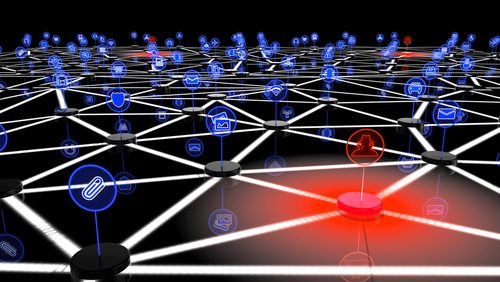Organizations today face a tsunami of data and have turned to advanced digital solutions for real-time visibility across their entire value chain of assets and operations. An example of this technology is the digital twin, which has been augmented by rapid advances in the Internet of Things (IoT) and is one of the fastest growing applications of industrial IoT.
Simply put, a digital twin is a digital reflection of a person, place or thing that correlates all information – including historical data, current operations and environmental conditions – related to that person, place or thing. An industrial example of a digital twin is the correlated information for a hydraulic pump deployed on a plant floor. A digital twin is created for the pump and maintained to allow identification, simulation, analysis and control of that pump. As more information is acquired, the digital twin becomes more useful, enabling evolution from reactive to predictive support. A digital twin solution enables staff to navigate the information in operationally-relevant views, within commonly used user interfaces.
As it stands, anything can be a twin, like the hydraulic pump mentioned above or a jet engine or even entire processes which would be a composite digital twin. Building a digital twin typically starts with a sensor attached to a physical object to deliver contextual data. By doing so, organizations will have the ability to run simulations on the object or process prior to deployment, stress test it to find out how it would perform under other circumstances and monitor it to predict if something will go wrong or right and discover why it could happen. Implementing digital twins has proven to be of great benefit, particularly for the development of new products, enterprise-wide process improvement and the creation of completely new business models. For this reason, the demand for digital twins continues to flourish. In fact, the digital twin market is expected to be worth $35.8 billion by 2025.
The Data Challenge with Digital Twins
“With great power comes great responsibility.”1 Digital twins are incredibly powerful tools, delivering real time insights into products or processes. Securing these new tools has never been tougher as IoT connectivity from wireless networks enables visibility and action from nearly anywhere and the lack of standards vexes IT departments. In addition to security, another challenge organizations face is how to seamlessly integrate operational data from IoT devices with the various business functions in an enterprise to unlock the full benefits of the digital twin. These benefits only become evident and exploitable when disparate operational data is integrated, and quality data can be extended across enterprise systems. This is often a huge challenge, particularly for organizations with hundreds of thousands of devices each reporting to specific line of business (LOB) systems or applications. Organizations will now have to think about deploying composite digital twins to allow them to integrate all the different digital twins involved in a LOB’s operations or processes.
Every digital twin has distinct and at times unrelated data streams. Information no longer just flows between the physical object to the digital twin – it also flows to the enterprise systems and the people within the ecosystem who require access to the twin to view, manage or manipulate the data. Take a connected medical device, for instance. Data is collected by the medical device itself, stored on the digital twin to enable role specific information flows to different stakeholders – medical information required by the doctor while the insurer or payer will need information relating to claims, all of which are stored on the digital twin while the device manufacturer will need access to the device’s performance data. In this complex ecosystem, leveraging an identity-centric approach is essential in securing and orchestrating these data streams to the appropriate and permitted stakeholder.
With millions of data sets being created every minute in an integrated system where each twin relies on one another to supply trusted information, the question of data quality comes to the fore. This begins with device validation. Organizations must be able to ensure that each and every IoT device is exactly what it says it is, has the rights to be on the network and is producing reliable and expected data. Without this assurance, the digital twins and their IoT-sourced data are highly at risk of delivering flawed results.
In a digital twin environment, data must be attested and validated. Failing to properly identify IoT devices will result in several risks, including lack of visibility into the device’s activity, and permitting too much access that may expose data or expose the device to cyberattacks. This identification of every person, system and thing in the creation of the digital twin ensures secure access to data being created and allows digital twins to take on greater roles within the organization.
Overcoming The Data Challenge With The Right IoT Platform
In order to ensure the data and the devices they are extending are not at risk, organizations must adopt an identity-first approach.
Traditional data quality tools are not optimized to support the scale and distribution of either IoT technologies or the data that the different IoT devices create. This calls for an identity-driven IoT platform as the foundation for the digital twins to facilitate and secure all connections throughout the industrial IoT ecosystem of people, systems and things.
Organizations should therefore consider an IoT platform which not only offers seamless integration between the various digital twins across the organization, but which also offers comprehensive secure device management. This allows the organization to authenticate, configure, monitor and manage each individual device at scale.
1. Lee, Stan. Amazing Fantasy No. 15, Marvel Comics August 10th 1962.
The opinions expressed in this post belongs to the individual contributors and do not necessarily reflect the views of Information Security Buzz.



